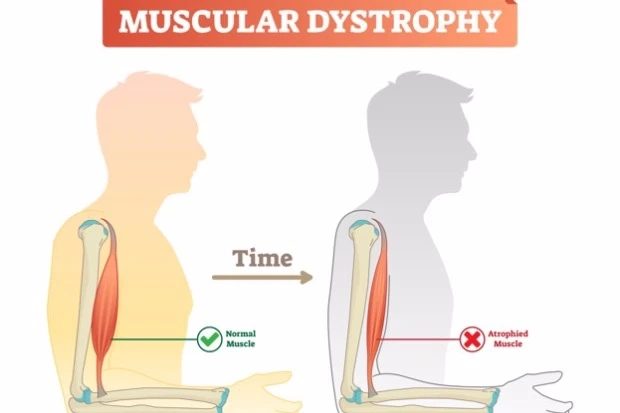Duchenne Muscular Dystrophy (DMD) Disease Overview:
Duchenne Muscular Dystrophy (DMD) Disease is a rare genetic disorder characterized by progressive muscle degeneration and weakness. It primarily affects boys and is caused by mutations in the dystrophin gene, leading to the absence or deficiency of the dystrophin protein. Over the years, advancements in medical research have provided valuable insights into the disease, paving the way for improved diagnostic methods, treatment options, and the development of emerging therapies. In this article, we will delve into the current landscape of Duchenne Muscular Dystrophy, highlighting key aspects such as diagnostic analysis, treatment strategies, emerging therapies in development, and the status of clinical trials.
The Market Competitors Listed Below are Revolutionizing Healthcare with Innovative Inventions:
Diagnostic Market Players-
GE HealthcareSiemens HealthineersPerkinElmerPhilips HealthcareBaylor GeneticsTreatment Market Players-
PfizerMerck & Co., Inc.SanofiGlaxoSmithKline (GSK)Teva Pharmaceutical Industries Ltd.Mylan N.V.Diagnostic Analysis:
Accurate and early diagnosis of Duchenne Muscular Dystrophy is crucial for effective management and intervention. Disease Landscape Insights (DLI) has played a pivotal role in enhancing diagnostic capabilities through genetic testing and molecular analyses. Genetic testing allows for the identification of dystrophin gene mutations, enabling healthcare professionals to confirm the presence of DMD. Additionally, advancements in imaging techniques, such as muscle biopsies and magnetic resonance imaging (MRI), contribute to a comprehensive diagnostic analysis, providing valuable information about muscle structure and function.
Treatment Analysis:
Historically, Duchenne Muscular Dystrophy has posed significant challenges in terms of treatment options. However, recent years have witnessed notable progress in the development of therapeutic interventions aimed at managing symptoms and slowing disease progression. Steroid medications, such as corticosteroids, have become a standard treatment for DMD as they help improve muscle strength and delay the onset of complications. Physical therapy, orthopedic interventions, and respiratory support also form essential components of the multidisciplinary approach to DMD management.
Emerging Therapies in Development:
The field of Duchenne Muscular Dystrophy research is witnessing a surge in the development of novel therapies targeting the underlying genetic mutations. Gene therapy, in particular, holds promise as a potential game-changer in the treatment of DMD. Experimental approaches like exon skipping and gene editing aim to either restore or bypass the defective dystrophin gene, thereby addressing the root cause of the disease. Advances in antisense oligonucleotide technology have paved the way for innovative therapies designed to modulate gene expression and promote the production of functional dystrophin.
Browse More Information:
https://www.diseaselandscape.com/genetic/duchenne-muscular-dystrophy-market-entry-Insights
Clinical Trial Assessment:
Clinical trials play a crucial role in evaluating the safety and efficacy of emerging therapies for Duchenne Muscular Dystrophy. Disease Landscape Insights (DLI) provides a comprehensive overview of ongoing clinical trials, allowing researchers and healthcare professionals to assess the potential impact of new treatments. Clinical trials may focus on gene therapies, novel pharmacological interventions, or combination therapies to address various aspects of DMD. Regular updates and insights from clinical trials contribute to the continuous refinement of treatment strategies and the identification of potential breakthroughs.
Conclusion:
The landscape of Duchenne Muscular Dystrophy is evolving, driven by advancements in diagnostics, treatment modalities, and the exploration of innovative therapies. Disease Landscape Insights (DLI) has become an invaluable tool in understanding and addressing the complexities of DMD. As research progresses, the collaborative efforts of scientists, clinicians, and advocacy groups hold the promise of transforming the outlook for individuals affected by Duchenne Muscular Dystrophy, offering hope for improved quality of life and ultimately, a cure for this debilitating genetic disorder.
Browse through more Genetic Diseases Insights LLP Research Reports.
Related Reports:
Solid Tumor Diseases: A Comprehensive Guide to Detection and Therapeutic Strategies
Demodex Blepharitis: Diagnosis, Treatment, and Prevention
Hemophilia Disease Explained: Causes, Symptoms, and Treatment Options
Spinal Muscular Atrophy (SMA) Disease Chronicles: Navigating Life with Spinal Muscular Atrophy
Contact Us:
Disease Landscape Insights LLP
6th Floor, Sr No.207, Office A H 6070 Phase 1
Solitaire Business Hub, Viman Nagar
Pune, Maharashtra, 411014
Email: ajay@diseaselandscape.com
Email: vishal@diseaselandscape.com
Blog: https://www.diseaselandscape.com/blogs
Case Study: https://www.diseaselandscape.com/casestudies



